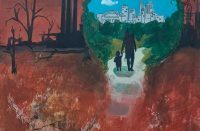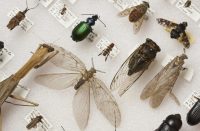How were residents impacted by the relocation (and destruction) of villages to build the St. Lawrence Seaway? Why is environmental art so important in Canada today? Will people ever care as much about bats dying off as they do about bees? What’s the role of traditional knowledge in conservation projects in Guyana? These four very different questions are all answered in this edition of the A\J Podcast.
We reviewed Louis Helbig’s Sunken Villages exhibit in the Night issue. Helbig’s aerial photos shine light on important issues that extend beyond the life of his art exhibit. You can learn more about the history of the St. Lawrence Seaway by visiting SunkenVillages.ca, and by listening to this edition of the A\J podcast.
Emily Slofstra interviews Helbig and clips from Helbig’s audio interviews with residents of the villages that were destroyed and relocated are woven throughout the podcast. Slofstra and Helbig also chat about the importance of environmental art to challenge Canada’s reliance on resource extraction. (4:13)
Slofstra also talks to Burton Lim, Assistant Curator of Mammalogy at the Royal Ontario Museum in Toronto. Lim contributed to Night with “They Only Come Out at Night,” featuring everyone’s favourite flying mammal, the cute and cuddly bat. Slofstra and Lim discuss the importance of bats, as well as human perceptions of bats, the role of traditional knowledge in Lim’s work, and how you can join a research expedition in Guyana or Borneo. (40:22)
Check out more podcasts, blogs and magazines at AlternativesJournal.ca.












